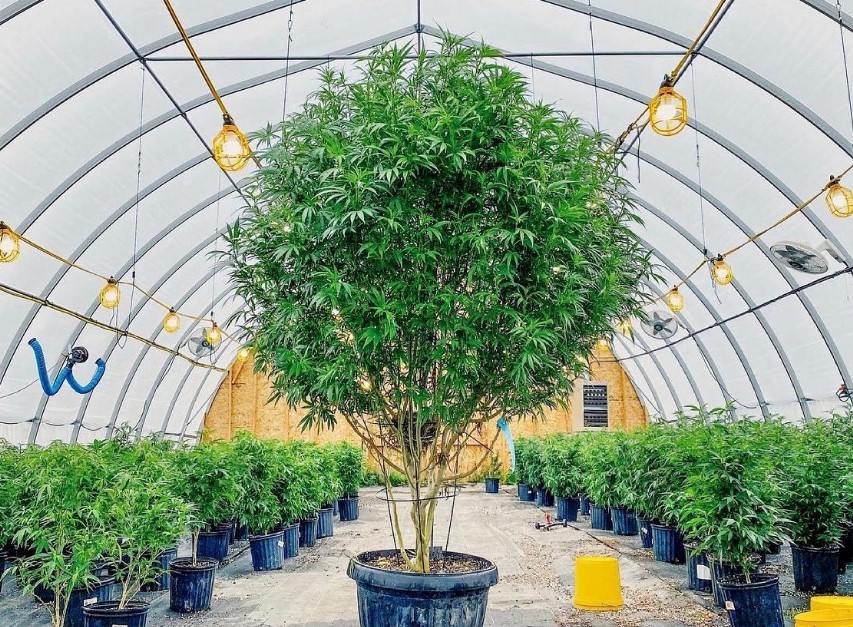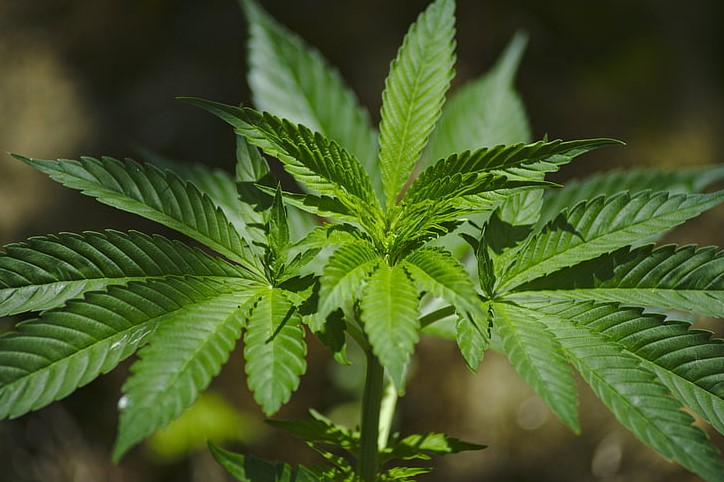Are you a cannabis enthusiast looking to ensure a consistent supply of your favorite strain? Have you ever considered keeping a cannabis mother plant? In this comprehensive guide, we will explore everything you need to know about mother plants, their benefits, and how to successfully maintain them. Whether you are a commercial grower or a home hobbyist, keeping a mother plant can provide you with an unlimited supply of clones that replicate the genetic traits of your favorite strain. Let’s dive in and discover the wonders of cannabis mother plants.
What is a Cannabis Mother Plant?
A cannabis mother plant is essentially a plant that is kept in the vegetative stage indefinitely. The purpose of maintaining a mother plant is to obtain genetic clones or cuttings that grow into identical copies of the parent plant. By selecting a desirable phenotype, you can replicate its unique characteristics without the need for phenotyping or searching for similar genetics. Mother plants serve as a valuable resource for perpetuating specific strains and ensuring a consistent supply of high-quality buds.
The Benefits of Keeping a Cannabis Mother Plant
Genetic Stability and Replication
One of the major benefits of maintaining a cannabis mother plant is the ability to preserve the genetics of a prized phenotype. When you find a strain that you truly love, keeping a mother plant allows you to maintain a direct copy of its genetic profile. Even if you were to cross the strain with a similar male plant, the offspring would exhibit genetic variability, making it difficult to replicate the exact traits of the original specimen. By keeping a mother plant, you ensure genetic stability and can consistently produce plants with the desired characteristics.
Continuous Cloning and Perpetual Harvests
Keeping a mother plant allows you to have a perpetual harvest system in place. While your mother plant remains in the vegetative stage, you can continuously take cuttings or clones from it. These clones will grow into new plants that share the same genetic traits as the mother plant. As a result, you can plan your harvests in such a way that when one batch is ready for harvest, the mother plant is already producing new clones. This system ensures a constant supply of buds without the need to wait for seeds to germinate and plants to reach maturity.
Cost and Time Efficiency
Starting from clones obtained from a mother plant is a cost and time-efficient method for both commercial growers and home hobbyists. When starting from seeds, there is always a risk of germination failure, leading to wasted time and effort. By using clones, you bypass the seedling phase and can focus on growing plants that are already a few weeks into the vegetative stage. This saves time and increases the chances of successful cultivation. Additionally, starting from clones allows you to skip the process of phenotyping and searching for desirable traits, as you already have a mother plant with the desired phenotype.
Consistency and Quality Control
Maintaining a mother plant ensures consistency in your harvests. Since the clones obtained from the mother plant are genetic replicas, you can expect consistent results in terms of flavor, aroma, potency, and yield. This is particularly beneficial for commercial growers who need to provide a consistent product for their customers. By eliminating genetic variation, you can control the quality and characteristics of your plants, ensuring a satisfying and reliable experience for consumers.
Selecting a Suitable Mother Plant
Choosing the right mother plant is crucial for successful cloning and maintaining genetic stability. Here are some key factors to consider when selecting a suitable mother plant:
Phenotype Selection
To find the ideal mother plant, it is recommended to grow multiple plants of the same strain. This allows you to compare and select the best phenotype based on various factors such as size, shape, productivity, cannabinoid and terpene content, disease resistance, and flowering time. By growing several plants, you increase your chances of finding a unique cultivar that meets your specific preferences.
Desired Traits
When selecting a mother plant, consider the specific traits you want to preserve and replicate. These traits can include high yields, dense buds, desirable terpene profiles, resin production, and ease of growth. Take the time to observe and evaluate each plant’s characteristics to ensure that the chosen mother plant possesses the desired traits.
Health and Vigor
A healthy and vigorous mother plant is essential for successful cloning. Ensure that the mother plant has strong roots, a robust stem and branches, and an overall good structure. Avoid selecting plants with signs of disease, nutrient deficiencies, or weak growth. A healthy mother plant will provide strong and resilient clones, increasing their chances of survival and successful cultivation.
Space Considerations
Keeping in mind the size and space requirements of mother plants is crucial, especially for home growers. Mother plants can grow large and bushy, making it challenging to maintain pest and pathogen control. Consider the available space in your grow area and choose a strain or plant size that fits within your limitations. It is also important to regularly prune and train your mother plant to control its size and shape.
Establishing and Maintaining a Mother Plant
Step 1: Choose the Strain
Select the strain you want to grow and identify the best phenotype from your batch of plants. Grow multiple plants to increase your chances of finding a unique cultivar that meets your preferences. Consider factors such as yield, flavor, effect, resin production, and growth characteristics when making your selection.
Step 2: Grow Seeds and Clone Plants
Once you have chosen the strain and identified the best phenotype, grow the plants from seeds. Allow the plants to grow for a few weeks before taking cuttings or clones. Take multiple clones from each plant to ensure a higher success rate. Place the clones under an 18/6 light cycle to promote growth.
Step 3: Grow the Mother Plant
Select the best clone from your batch and designate it as the mother plant. It is recommended to top the mother plant to promote bushier growth and facilitate easier cloning. Remember to keep the mother plant under an 18/6 light cycle throughout its vegetative stage. Regularly prune and train the mother plant to control its size and shape and ensure optimal health and vigor.
Maintaining a Healthy Mother Plant
To ensure the longevity and health of your mother plant, it is essential to provide proper care and maintenance. Here are some tips for keeping your mother plant happy:
Nutrient Requirements
Mother plants have specific nutrient requirements, especially during their prolonged vegetative stage. For long-term vegetative growth, consider a well-balanced liquid fertilizer with a suitable NPK ratio, such as 2-2-4.
Here’s a general guideline for more conservative PPM levels of the suggested nutrient solution during different growth stages:
| Mother Pant Growth Stage | Suggested Nutrient Solution (NPK 2-2-4) |
|---|---|
| Early Veg | 300-500 ppm |
| Mid Veg | 600-800 ppm |
| Late Veg / Ongoing Veg | 800-1000 ppm |
Adjust the nutrient levels based on your observations and the specific requirements of your chosen cannabis strain. Regularly check for signs of nutrient deficiencies or excesses and adjust your feeding regimen accordingly. Remember, maintaining a balanced nutrient profile is key to ensuring the health and vigor of your cannabis mother plant.
Feel free to adjust the NPK ratios based on your specific fertilizers and the needs of your particular strain.
Size Control Techniques
As mother plants can grow large and bushy, implementing size control techniques is important, especially for limited grow spaces. Consider techniques such as topping and pruning to manage the size and shape of the plant. Regularly remove excess foliage to allow for better airflow and light penetration, reducing the risk of pests and pathogens.
Disease and Pest Prevention
Maintaining a clean and pest-free environment is crucial for the health of your mother plant. Implement a pest prevention plan by using natural pesticides and regularly inspecting the plant for signs of pests or diseases. Additionally, ensure proper ventilation and humidity control to prevent the development of mold and fungal infections.
Cloning and Regeneration
Regularly take cuttings or clones from your mother plant to maintain a continuous supply of genetic replicas. Take clones from the top branches of the plant, as they tend to have better success rates. Dip the clones in rooting gel and provide them with appropriate rooting conditions. Once the clones have rooted, transplant them into their growing medium and monitor their growth.
Retirement and Succession
Over time, mother plants may become less productive or show signs of decline. When you notice a decline in the quality or vigor of your mother plant, it is time to retire it and replace it with a new clone. Keep one of the healthy clones as the new mother plant and continue the cycle of cloning and succession to ensure a continuous supply of high-quality clones.
FAQs About Cannabis Mother Plant Care
Q: What are the best conditions for mother plants?
A: Mother plants thrive in a dedicated grow tent with proper ventilation. Maintain temperatures between 23-26°C and relative humidity around 60% for optimal growth.
Q: What happens when mother plants get old?
A: As mother plants age, they may become weaker and more susceptible to pests and diseases. It is recommended to replace aging mother plants to ensure the health and vitality of the clones.
Q: What’s the best mother plant pot size?
A: For potted mother plants, use containers with a capacity of at least 18-20L to prevent root-bound issues. Avoid letting the roots become overcrowded, as this can negatively impact plant health.
Q: What’s the best lighting schedule for mother plants?
A: Mother plants can be kept under a 14/10 light schedule to save on electricity costs and prevent excessive growth. Avoid providing less than 14 hours of light, as this may induce flowering.
Q: What’s the best light for mother plants?
A: Full-spectrum LED lights are suitable for mother plants. However, if simplicity is desired, grow lights with a blue spectrum, such as Metal Halide (MH) or Compact Fluorescent Lights (CFL), can be used. Aim for around 250W of light intensity.
Q: How often can you take clones from a mother plant?
A: You can take clones from a mother plant whenever needed. However, it is essential to allow the mother plant a minimum of 15 days to rest between cloning sessions. This ensures the mother plant’s health and vitality.
In Conclusion
Keeping a cannabis mother plant can be a rewarding endeavor for both commercial growers and home hobbyists. By selecting a suitable mother plant and implementing proper care and maintenance, you can ensure a consistent supply of high-quality clones that replicate the desired genetic traits. Whether you are looking for genetic stability, cost efficiency, or quality control, a well-maintained mother plant can provide you with the key to perpetual harvests and an endless supply of your favorite strain. Embrace the wonders of mother plants and enjoy the benefits they bring to your cannabis cultivation journey.
Remember, taking care of your mother plant requires attention to detail, regular monitoring, and providing the optimal conditions for growth. With the knowledge and tips shared in this guide, you are well-equipped to embark on your mother plant adventure. Happy growing!





